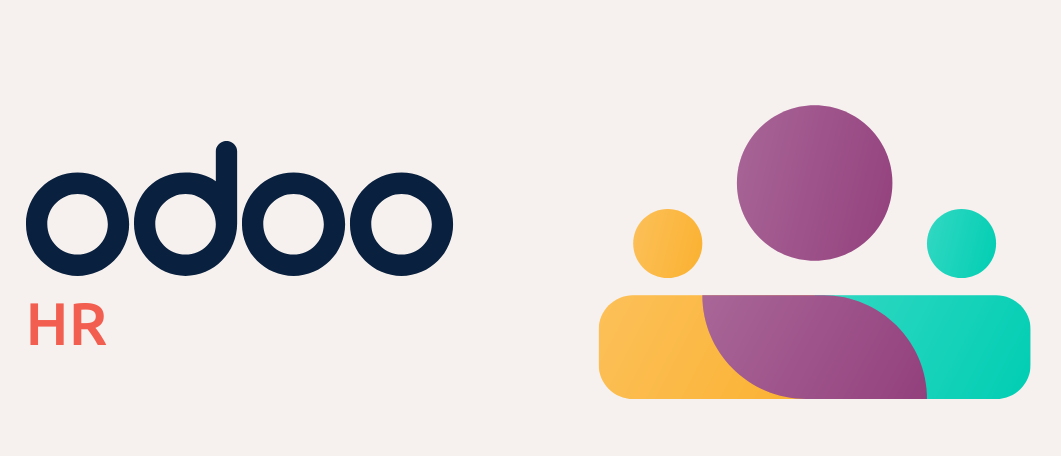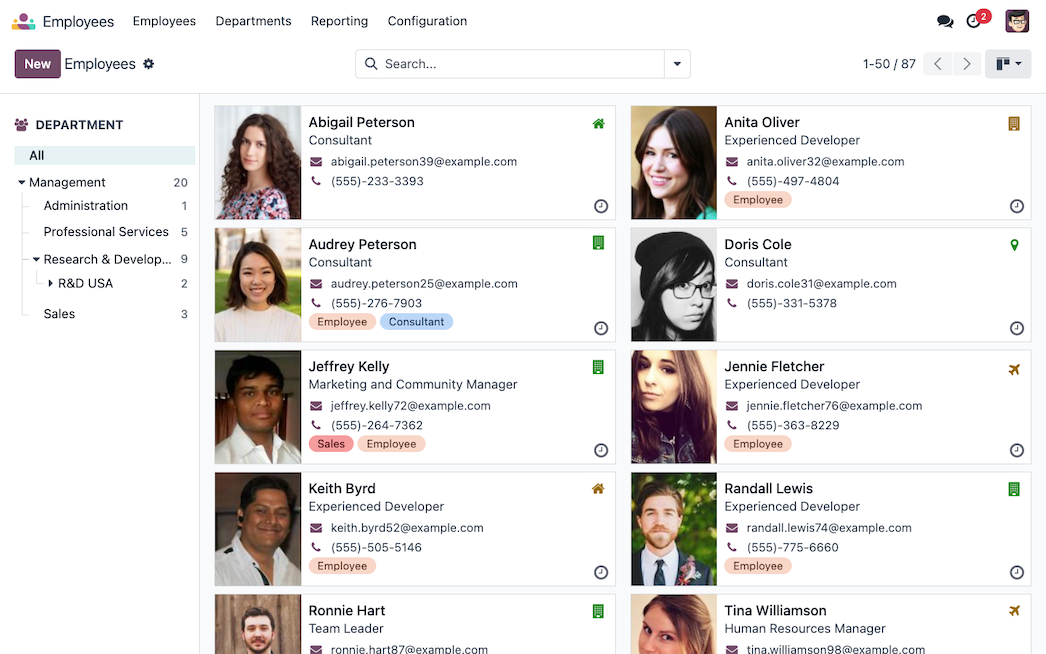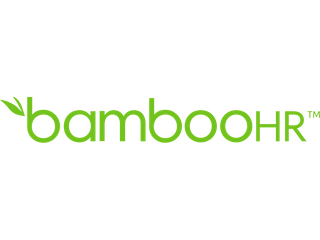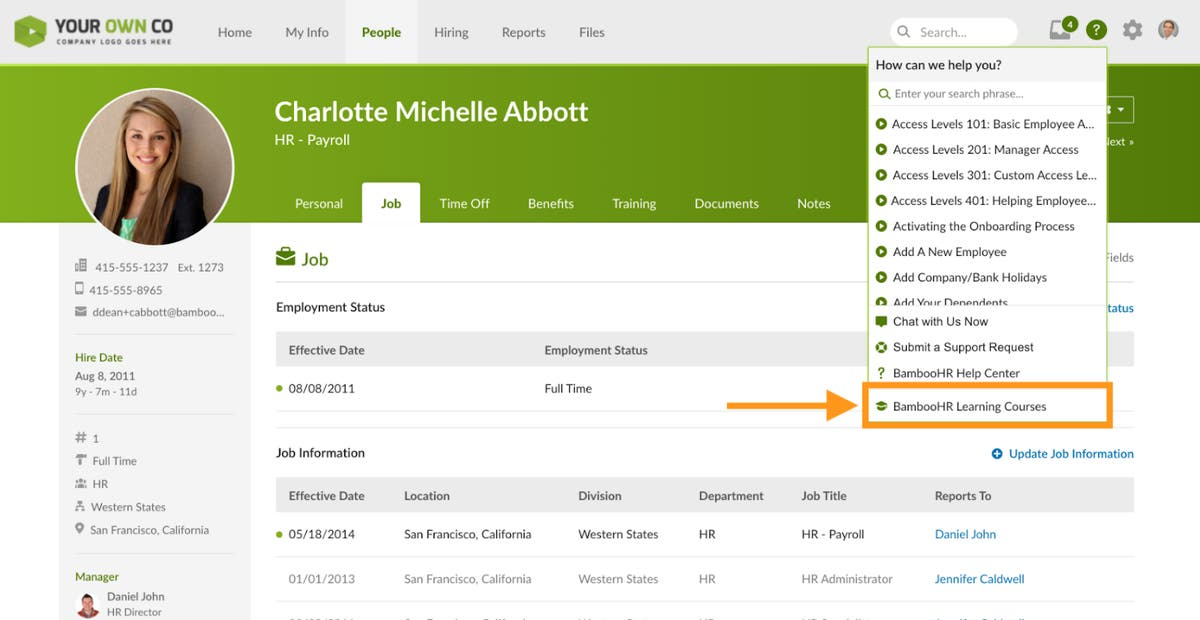In today's fast-paced business world, effective Human Resources (HR) management is crucial for organisational success. Australian businesses, from bustling startups to established enterprises, are constantly seeking the best tools to streamline HR processes, enhance employee experience, and ensure compliance with local regulations. When it comes to HR software, a fundamental decision often arises: should you opt for a dedicated HR platform like BambooHR, or embrace a comprehensive Enterprise Resource Planning (ERP) system with integrated HR functionalities, such as Odoo?
This article delves into a detailed comparison of Odoo HR and BambooHR, exploring their features, benefits, limitations, and ultimately helping you determine which solution best suits your unique business needs in the Australian market.
Understanding the Landscape: Dedicated HR vs. Integrated ERP
Before we dive into the specifics of Odoo HR and BambooHR, it’s important to understand the core philosophies behind these two approaches.
Dedicated HR Software: The Specialised Approach
Dedicated HR software, like BambooHR, focuses solely on human resources functions. These systems are designed to be highly intuitive and user-friendly for HR professionals, often excelling in specific areas such as applicant tracking, onboarding, time-off management, and performance reviews. They aim to simplify HR tasks and improve the employee experience by providing a centralised hub for all HR-related data and processes.
Pros of Dedicated HR Software:
- Specialisation: Often offers deeper, more granular features for specific HR functions.
- Ease of Use: Typically designed with a focus on HR professionals, leading to a highly intuitive user interface.
- Faster Implementation: Can be quicker to deploy as they have a narrower scope.
- Cost-Effective for HR-Specific Needs: If your requirements are purely HR-centric, a dedicated solution might appear more economical initially.
Cons of Dedicated HR Software:
- Data Silos: Information often remains isolated from other business functions (e.g., finance, sales, manufacturing), requiring manual data transfer or complex integrations.
- Limited Business Overview: Lacks a holistic view of business operations, which can hinder strategic decision-making.
- Scalability Challenges: As your business grows and integrates more departments, a standalone HR system might struggle to keep up with the increasing demand for cross-functional data.
- Potential for Integration Headaches: While many offer integrations, they can be costly, complex, and sometimes prone to errors.
Integrated ERP with HR: The Holistic Approach
An ERP system, like Odoo, aims to integrate all core business functions into a single, unified platform. This includes not just HR, but also accounting, sales, inventory, project management, manufacturing, and more. Odoo HR is a module within this broader ecosystem, meaning it inherently shares data and processes with other departments without the need for complex integrations.
Pros of Integrated ERP with HR:
- Unified Data and Processes: A single source of truth for all business data, eliminating data silos and ensuring consistency.
- Enhanced Visibility: Provides a comprehensive, real-time overview of your entire business operations, enabling more informed strategic decisions.
- Streamlined Workflows: Automation and seamless data flow between departments reduce manual tasks and improve efficiency across the board.
- Scalability and Flexibility: Designed to grow with your business, allowing you to add modules as your needs evolve.
- Reduced Integration Costs and Complexity: Native integration between modules eliminates the need for expensive and often fragile third-party connectors.
Cons of Integrated ERP with HR:
- Higher Initial Investment: The upfront cost for a full ERP suite can be higher than a standalone HR solution.
- Longer Implementation Time: Implementing a comprehensive ERP system typically requires more planning and time.
- Complexity: The sheer breadth of features can be overwhelming for smaller teams or those new to ERP systems.
- Learning Curve: Employees across different departments may need more training to adapt to the new unified system.
Odoo HR: The Integrated Powerhouse for Australian Businesses
Odoo is an open-source, modular ERP system that provides a robust suite of business applications. Its HR module is not just a standalone feature but an integral part of its holistic ecosystem, designed to interact seamlessly with other Odoo applications like Payroll, Accounting, Project Management, and CRM.

Key Features of Odoo HR:
- Employee Management: Centralised employee database for comprehensive profiles, including personal details, contracts, job history, skills, and emergency contacts. This eliminates scattered spreadsheets and ensures all employee information is readily accessible.
- Recruitment Management (ATS): Streamlined applicant tracking system (ATS) for posting job openings, managing applications, scheduling interviews, and communicating with candidates. It allows for a structured and efficient hiring process from start to finish.
- Time Off & Leave Management: Automated system for employees to request time off, and for managers to approve or reject requests. It simplifies leave tracking, accruals, and ensures compliance with Australian leave entitlements (e.g., annual leave, sick leave, long service leave).
- Attendance & Timesheet Management: Tools for tracking employee attendance (e.g., check-in/out, biometric integration) and managing timesheets for project billing or payroll purposes. This offers accurate data for productivity analysis and wage calculations.
- Payroll Management: A fully integrated payroll module that automatically syncs with attendance, leave, and timesheet data, simplifying salary calculations, deductions, and tax compliance. This is particularly beneficial for navigating the complexities of Australian payroll regulations.
- Expense Management: Employees can submit expenses directly through the platform, with managers easily approving or rejecting requests. Approved expenses can be directly integrated into payroll or accounting for smooth reimbursement.
- Performance Management & Appraisals: Tools to set performance goals, track employee achievements, conduct performance reviews, and manage appraisal cycles. This supports employee development and identifies training needs.
- Training & Development: Helps businesses organise training sessions, track employee progress, and analyse the effectiveness of training programs, fostering continuous learning and skill development.
- Employee Self-Service Portal: Empowers employees to manage their own profiles, submit requests (e.g., leave, expenses), view payslips, and access company policies, reducing the administrative burden on HR staff.
- Document Management: Securely store, track, and update important employee documents, ensuring compliance with labor laws and regulations.
- Reporting & Analytics: Provides comprehensive HR reports and dashboards for insights into employee data, attendance trends, recruitment metrics, and overall HR performance.

Benefits of Odoo HR for Australian Businesses:
- Unified Business Operations: As part of the Odoo ERP, HR seamlessly integrates with other critical business functions like finance, project management, and sales. This means employee data flows effortlessly from HR to payroll, or from project timesheets to invoicing, reducing manual data entry and errors. For example, employee hours logged in Odoo Project can automatically feed into Odoo Payroll.
- Scalability: Odoo's modular design means you can start with the HR module and gradually add other functionalities as your business grows, making it suitable for businesses of all sizes, from SMEs to larger enterprises.
- Customisation and Flexibility: Odoo is highly customisable. Businesses can add modules, develop custom features, or tailor existing functionalities to perfectly match their unique HR processes and Australian compliance requirements.
- Cost-Effectiveness (Long Term): While an initial investment might be higher for the full suite, the long-term cost savings from reduced manual tasks, improved efficiency, and the elimination of multiple disparate systems can be substantial. Odoo also offers flexible pricing models, including a "one app free" option.
- Localisation Potential: With the right Odoo partner, the system can be tailored to meet specific Australian legal and payroll requirements, such as Superannuation, PAYG withholding, and Fair Work regulations.
BambooHR: The User-Friendly HR Specialist
BambooHR is a popular cloud-based HR software known for its user-friendly interface and focus on core HR functions for small to medium-sized businesses (SMBs). It aims to simplify the day-to-day HR tasks and improve the employee experience.\

Key Features of BambooHR:
- Employee Database: A central repository for employee information, including personal details, job history, and emergency contacts.
- Applicant Tracking System (ATS): Tools for managing the hiring process, from job posting to offer letters.
- Onboarding & Offboarding: Streamlined workflows for welcoming new hires and managing the exit process for departing employees.
- Time Off Tracking: Manages leave requests, approvals, and balances for various types of time off.
- Performance Management: Features for setting goals, conducting performance reviews, and gathering 360-degree feedback.
- Benefits Administration: Helps manage employee benefits information and enrollment.
- Reporting & Analytics: Provides standard HR reports and basic analytics to track key HR metrics.
- Employee Self-Service: Allows employees to access their information, request time off, and view payslips (if integrated with a payroll provider).
- Integrations Marketplace: Offers integrations with a variety of third-party applications, particularly for payroll, benefits, and time tracking, as BambooHR itself does not have native payroll.

Benefits of BambooHR for Australian Businesses:
- User-Friendly Interface: Highly intuitive and easy to navigate, making it simple for HR staff to quickly get up to speed.
- Strong Focus on Core HR: Excels in streamlining essential HR administrative tasks.
- Good for Small to Medium Businesses: Often a good fit for companies that primarily need robust HR-specific functionalities without complex ERP integration.
- Employee Experience: Many features are designed to enhance the employee journey from hire to retire.
Limitations of BambooHR:
- Limited ERP Integration: While it offers integrations with other systems, it's not designed to be part of a unified ERP. This can lead to data duplication, inconsistencies, and the need for manual data transfer between systems (e.g., HR data to accounting for payroll).
- No Native Payroll: A significant limitation for Australian businesses, as payroll is a complex and highly regulated area. You'll need to integrate with a separate payroll provider, which adds complexity and potential for errors.
- Lack of Broader Business Functions: Does not offer functionalities for finance, inventory, sales, CRM, or manufacturing. Businesses requiring these will need separate systems, potentially creating data silos.
- Scalability Beyond HR: While it scales well within HR functions, scaling to a full business solution requiring cross-departmental data flow can be challenging and costly through multiple integrations.
- Pricing Structure: Pricing can become expensive as you add more employees and features, as many advanced functionalities are add-ons.
Odoo HR vs BambooHR: A Head-to-Head Comparison
Let's put them side-by-side to highlight the key differences relevant to businesses operating in Australia.
| Feature Area | Odoo HR | BambooHR |
|---|---|---|
| Core Philosophy | Integrated ERP module, part of a holistic business management suite. | Dedicated HR software, focused purely on human resources. |
| Payroll | Native, fully integrated module. Handles complex Australian payroll. | No native payroll. Requires integration with third-party payroll providers. |
| Accounting/Finance | Native, fully integrated with HR. Seamless data flow for financial reporting. | Requires integration with separate accounting software; potential for data silos. |
| CRM/Sales | Native, fully integrated. Connects HR data with customer interactions. | No direct integration; operates as a standalone HR system. |
| Project Management | Native, fully integrated. Timesheets directly feed into HR/Payroll. | No direct integration; requires external project management tools. |
| Inventory/Manufacturing | Native, fully integrated. HR data (e.g., shifts) can impact operations. | No direct integration. |
| Customisation | Highly customisable and extensible; open-source flexibility. | Moderately customisable within its defined HR scope. |
| Scalability | Scales broadly across all business functions as your company grows. | Scales well within HR functions, but limited for broader business expansion. |
| User Interface | Clean, modern, and consistent across all Odoo modules. Can have a learning curve due to breadth. | Very user-friendly, intuitive, and designed specifically for HR users. |
| Implementation | Can be longer and more complex due to comprehensive scope. | Generally quicker and simpler due to narrower focus. |
| Data Silos | Eliminates data silos through a single, unified database. | Can create data silos; relies heavily on integrations for data exchange. |
| Australian Compliance | With a local partner, can be highly adapted for Australian specific HR and payroll laws. | May require careful configuration and integration to ensure full Australian compliance, especially for payroll. |
| Pricing Model | Modular pricing; can be cost-effective for an all-in-one suite. | Typically per-employee pricing; add-ons can increase costs. |
Who Should Choose Odoo HR?
Odoo HR is an excellent choice for Australian businesses that:
- Seek a unified business management solution: If you're tired of disparate systems for HR, accounting, sales, and operations, Odoo provides a single, integrated platform. This is especially beneficial for growing businesses looking to consolidate their software stack.
- Prioritise data consistency and real-time insights: For organisations that need a holistic view of their operations and want to eliminate manual data transfers and errors between departments.
- Require robust, native payroll functionality: Australian payroll is complex, and Odoo's integrated payroll module can significantly simplify compliance and processing.
- Are planning for significant growth and scalability: Odoo's modularity allows businesses to start with essential HR features and gradually add other functionalities as their needs evolve, without having to rip and replace systems.
- Value customisation and flexibility: Businesses with unique HR processes or specific reporting requirements can leverage Odoo's open-source nature for tailored solutions.
- Are looking for long-term cost efficiency: While the initial investment might be higher for a full ERP, the reduced operational costs, improved efficiency, and avoidance of multiple software licenses often lead to significant long-term savings.
Who Should Choose BambooHR?
BambooHR might be a better fit for Australian businesses that:
- Primarily need a dedicated, user-friendly HR system: If your focus is exclusively on simplifying core HR administrative tasks and improving employee experience within HR.
- Are small to medium-sized businesses with straightforward HR needs: For companies that don't require complex integrations with other business functions or have a very basic operational structure.
- Already have established, satisfactory systems for other business functions: If your accounting, sales, and project management systems are working well and you don't foresee a need for deep integration with HR data.
- Prefer a simpler, quicker implementation process: For businesses that want to get an HR system up and running with minimal fuss.
- Are comfortable integrating with external payroll providers: If you have an existing payroll solution you're happy with or prefer to outsource payroll entirely.
The Verdict: Integration vs. Specialisation
Ultimately, the choice between Odoo HR and BambooHR boils down to your organisation's strategic vision and current operational needs.
If your primary goal is to optimise people management with a user-friendly, dedicated HR platform that excels in core HR functions, and you're comfortable managing integrations with other systems for accounting or payroll, then BambooHR could be a strong contender. Its simplicity and focus make it appealing for businesses that prioritise ease of use in their HR department above all else.
However, if your vision extends beyond just HR to a fully integrated business ecosystem where HR data seamlessly flows into finance, sales, projects, and other critical departments, leading to enhanced visibility, streamlined workflows, and long-term scalability, then Odoo HR as part of the Odoo ERP suite is the superior choice. For Australian businesses navigating complex payroll regulations and seeking to future-proof their operations with a unified, customisable platform, Odoo offers a comprehensive and powerful solution. The ability to manage everything from recruitment and employee payroll to inventory and customer relationships within a single system provides an unparalleled level of efficiency and control.
In the dynamic Australian business landscape, where efficiency and compliance are paramount, making the right software choice is a critical strategic decision. Consider not just your immediate HR needs, but also your long-term growth aspirations and how well your chosen solution will integrate into the broader fabric of your organisation.
Moonsun.au – Your Odoo Partner in Australia
Navigating the complexities of ERP implementation and customisation, especially when it comes to specific Australian business requirements, can be challenging. This is where a reliable local partner becomes invaluable.
Moonsun.au is proud to be an Odoo partner in Australia, dedicated to helping businesses like yours leverage the full potential of Odoo's integrated HR and ERP solutions. Our team of experts understands the unique challenges and regulatory landscape of the Australian market, ensuring your Odoo implementation is not just technically sound but also perfectly aligned with your business objectives and local compliance needs.
From initial consultation and customisation to seamless implementation, training, and ongoing support, Moonsun.au offers end-to-end services to ensure your transition to Odoo HR and the broader Odoo ERP is smooth and successful. We work closely with you to understand your specific requirements, optimise workflows, and empower your team to get the most out of your Odoo investment.
Whether you're exploring Odoo HR for its powerful people management capabilities or looking to integrate HR seamlessly into a full ERP system,
contact Moonsun.au today for a free consultation.
Let's discuss how we can help you revolutionise your business operations and achieve your strategic goals with Odoo.